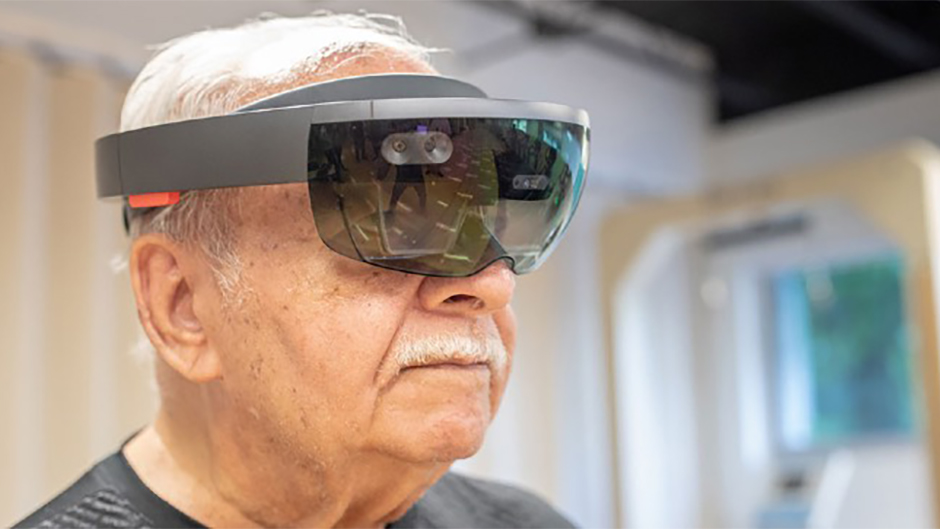“The beauty of this technology is we can bring it into a doctor’s office, we can take it out to the street, or even bring it onto a field or gym for athletes,” said Signorile.
During the executive function test, a patient is asked to wear programmed augmented reality goggles. The subject is then instructed to react to a set of given cues that are seen through the lens. If the cue signals a specific movement, such as a green arrow pointing left, the software has the capacity to determine whether the person made the correct movement and how long it took to do so.
Eltoukhy, Buskirk and Signorile hope their research can be used in a clinical environment in the future to treat a wide variety of patients who suffer from diseases that affect cognition.
“So many people can benefit from this. There is no end to what we can do. If we can achieve successful testing, it will thrive and move into a clinical setting,” said Eltoukhy.
The team also believes their test can be used as a rehabilitation tool.
“The implications here are really wide. We can use it to train people to make their reaction time faster and better so they make the right decisions,” said Buskirk.
Clinical trials are expected to get underway sometime next year. They hope the trials will provide them with the data they need to take their product to the next level.
Main photo: T.J. Lievonen/University of Miami; Article originally appeared in UM News by Amanda Perez

